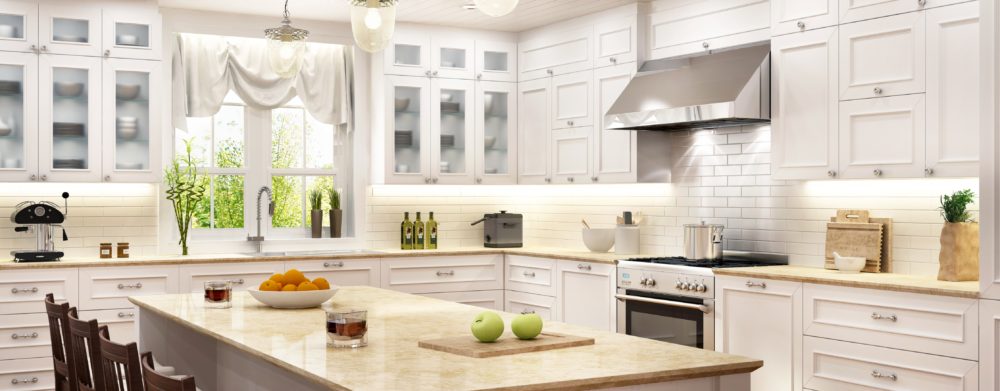Updating your kitchen can be both exhilarating and nerve-wracking. You have to factor in the costs, come with a decent plan, and make sure that everyt
Updating your kitchen can be both exhilarating and nerve-wracking. You have to factor in the costs, come with a decent plan, and make sure that everything is done safely. However, with proper planning, remodelling your kitchen should be a breeze, provided you know what you’re doing and willing to hire some help if needed. Here’s a simple step by step guide for anyone thinking of remodelling their kitchen.
Out with the Old
If you’re completely remodelling the kitchen or thinking of making it bigger, the first thing you should do is take care of the cabinets. Thankfully, most cabinets are very easy to remove. As a matter of fact, many are attached to the wall by nothing but two screws. However, make sure you have someone to help hold the cabinets as you unscrew them to avoid accidents.
Next, shut off power completely and start taking out appliances.
Update Electrical and Start Installing Lighting
Many new DIY kitchen remodelling projects will involve things like new pendants, breakfast nook lighting or recessed ceiling lighting. This is the perfect time to consider more energy efficient alternatives such as LED or fluorescent light if you had incandescent lights installed before.
One thing you might want to consider is upgrading your current consumer unit. Ask your electrician if it would be beneficial for the new kitchen. Regulations state that a new kitchen should have a circuit of its own to prevent things like a faulty microwave causing a power outage.
Install the Proper Plasterboard
Putting plasterboard up is a rather simple and straightforward task. However, if you’re intending on installing plasterboard in your kitchen, make sure that you don’t use regular plasterboard since it doesn’t react well in humid environments. Instead, you should be using Gyproc Moisture resistant or Glasroc H Tilebacker which is waterproof. Next, hire a plasterer to skim the walls and ceiling for a nice finish.
Install Cabinets, Worktops, and Appliances
Once this is done, you can either put your old cabinets back up and refurbish them or go with completely new ones. Installing new cabinets isn’t the most difficult job. Usually, the supplier who sold you the cabinets will offer installation as well, so take advantage of this. And having your cabinets installed by professionals will usually take you less than a day.
If you need custom worktops, expect it to take some time. Most of the time, installers will require that you give them template measurements only after the cabinets are installed. Once they get the measurements, manufacturing could take anywhere from a few days to a few weeks, so be prepared for that.
Now it’s time to move your old or new appliances in. Some people prefer to go with completely new appliances, but you can save by having a few elements repaired instead.
Oftentimes, it is usually recommended that you hire an electrician to do this part, especially for things like your cooker hood. They might also help by adding receptacle plates and pulling receptacles forward to match kitchen elements. Also, make sure that you hire a good plumber to install the sink for you after the backsplash and worktops have been installed. Your plumber will install the tap and any piping for washing machines and dishwashers.
Conclusion
As you can see, updating your kitchen shouldn’t give you a headache. With the proper preparation, your project should come together nicely, and you should be pleased with the final result.



















































































































COMMENTS